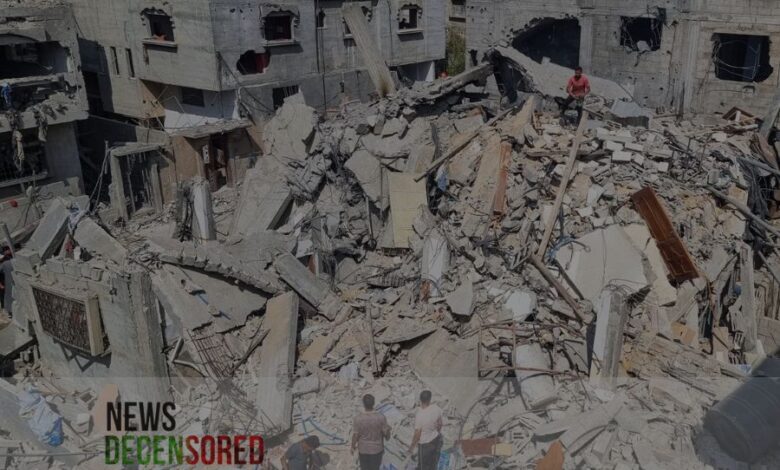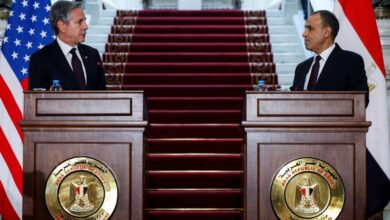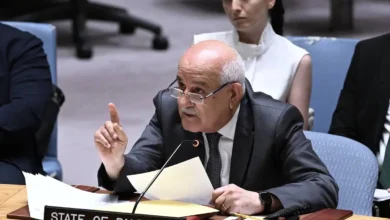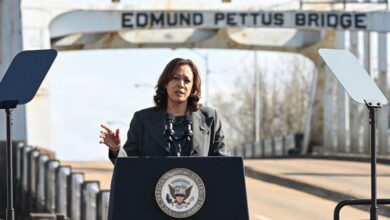Gaza at ‘most dangerous’ stage amid filled with more debris and rubble than Ukraine: United nations

The United Nations announced that the amount of rubble and rubble that must be removed in the Gaza Strip, which is subjected to continuous Israeli bombing, is greater compared to Ukraine, and it represents a very expensive and dangerous task given the presence of unexploded bombs in it, in addition to asbestos, which is harmful to health.
The official in charge of the United Nations Mine Action Service in Gaza, Mungo Birch, speaked to a press conference in Geneva, To understand the magnitude of the matter, the fighting front in Ukraine is 600 miles (about 1,000 kilometers) long, while Gaza is no more than 25 miles long (40 kilometers)” and it is all a battle front.
But the problem is not limited to the amount of rubble – 37 million tons, or 300 kilograms per square meter, according to a UN estimate in mid-April – but rather the large number of unexploded bombs contained in the rubble, which will be more complicated to clean up due to other hazards present. In the rubble, according to Birch.
Birch refers to asbestos, a natural mineral product that is resistant to heat and corrosion and was widely used in the manufacture of some products such as insulating materials, cement, and some types of floor tiles.
This substance is considered hazardous to health and requires special precautions, as it can lead to chronic pulmonary asbestos disease, the symptoms of which include shortness of breath, dry and chronic cough, tightness or pain in the chest, and others.
According to Birch, they estimate there are more than 800,000 tons of asbestos, just in the rubble of Gaza.
It is estimated that between 10 and 15% of munitions launched in conflict do not explode, and thus pose a permanent threat to the civilian population.
Birch expressed his hope that the United Nations Mine Action Service would eventually be “able to form a coordination body for clearing mines in Gaza and establish our own teams to dismantle mines and bombs.
Regarding funding, the United Nations Mine Action Service received $5 million, but to continue our work during the next 12 months, we need an additional $40 million, according to the UN official.
But “the Strip will need hundreds of millions of dollars over several years to make Gaza safe for the population.
Two weeks ago, the main parties in these future operations held a meeting in the Jordanian capital, Amman, under the supervision of the United Nations Development Programme, which is responsible for supervising the clean-up plan. The participants discussed the means and methods that must be put in place when the time comes.
Birch stressed, The problem is the unprecedented size of the rubble. We have to come up with new ideas on how to clear the mines,adding that they are currently still in the planning stage, given that mine clearance operations require a large number of heavy equipment and trucks.
Per Lodhamar, an official in the United Nations Mine Action Service, had confirmed that “65% of the destroyed buildings were residential. He pointed out during a regular press statement to the United Nations in Geneva on Friday that removing it will take 14 years,” assuming the use of about 100 trucks.
UNMAS can draw in particular on its experience in Iraq, as Lodhamar had previously undertaken the same task in Mosul, where 7 million tons of rubble and rubble had to be removed.
But accurately assessing the situation in Gaza is still impossible in light of the continuing fighting, heavy bombing, and lack of access. According to Birch, as long as they cannot reach the north to conduct an assessment, they will not be able to estimate the extent of contamination from unexploded bombs.
He pointed out, “The information we receive says that pollution is unprecedentedly severe in northern Gaza,” adding, “We believe that this will represent a major problem in the future.




